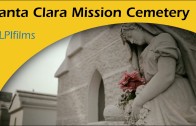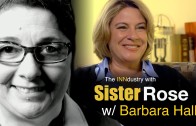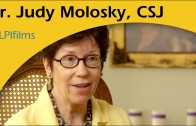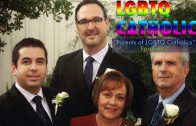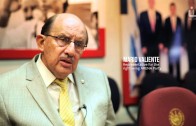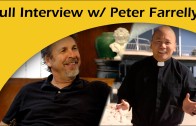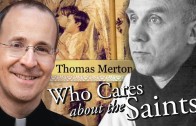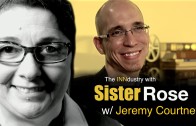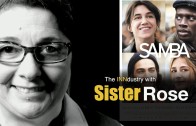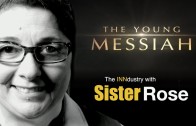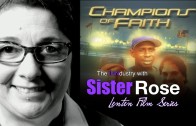A Grave Situation
A few months after I was born, my great-uncle Fr. Edward Timmons, S.J., dropped dead in the middle of reading the Passion at Palm Sunday mass. Quite the Halloween image, eh? Though I never met my namesake during the short time our lives overlapped, I feel like I have a relationship with him. I realize this might sound a bit odd, but this weekend when we pray for and to the dead on All Saints and All Souls, I suppose we’re embracing this oddness. We’re saying death isn’t the end, that relationships continue and we have the ability to connect deeply with those we’ve lost and even those we’ve never met.
Each time I’m near the Colombiere Center in Michigan, I try to visit Fr. Edward’s grave. The experience is never the same, shifting from mundane to intriguing to vaguely morbid, and sometimes helpful and life-giving. Regardless, there’s something that makes me keep going back. When I pray in front of his grave, I wonder what his life was like as a fellow Jesuit. What did he enjoy about religious life and what drove him crazy? Was it anything like my experience? I usually ask him to say a prayer for me now and again. Over the years, the cemetery has become more populated with rows of Jesuit tombstones, offering a stark reminder of the shoulders upon which I stand, and for better or worse, where my own journey will take me.
I hope this blog isn’t coming off too morbid. I realize referencing one’s own eventual demise in paragraph two isn’t exactly a pick-me-up. But I’m trying to be topical. Not only is today Halloween, and this weekend All Saints and All Souls, but here at Loyola Productions we just finished a project for the Jesuit community of Santa Clara University about their historic and beautiful cemetery (see below). A cemetery is a polarizing place. For some, especially on Halloween, it’s a setting for horror, or the iconic zombie dancing in Thriller. But it can also be a place of connection, prayer, and peace. This contrast isn’t too surprising given our contradictory relationship with death.
On one level, we love to be entertained by death. We can’t get enough murder shows (they say the time a child finishes elementary school s/he will have seen 8,000 murders on TV). Likewise supernatural stories about sexy non-living vampires and frightening ghosts continue to captivate us. And it’s hard to find many Best Picture films lacking a tear-jerker deathbed scene of some kind. But outside of the entertainment realm, we couldn’t be more avoidant of the subject. Maybe this is most true here in L.A. where reminders of mortality aren’t exactly encouraged. I’m not just talking about the inclination of many of the residents to morph into a plastic alien-looking agelessness or the industry’s obsession with youth. I’m being literal: Malibu doesn’t have a cemetery. Seriously. If you happen to die there, you’ll promptly be brought elsewhere.
Okay, I’m sure Malibu’s government has a valid reason–maybe a property or space issue–for why they don’t have cemeteries. But it also symbolizes something that extends beyond its borders: we really don’t want to be reminded of death. Many elderly people, still very much alive, feel the effects of this. Think of the last time you visited a nursing home–it probably wasn’t quite packed with visitors. Just last week, I was in New York City and visited Murray-Weigel Hall, the infirmary where many older Jesuits spend their final years at Fordham University. My Loyola Productions colleagues and I had the chance to pray with these men of varying health at mass and spend a little time with them. As a priest who has presided over many funerals, and anointed the sick, it’s still overwhelming to be reminded of the transformations of old age. Looking around the room at many Jesuit giants–men who seemed invincible in their prime–looking so profoundly and unabashedly human is a little jarring. Maybe that’s why we have such trouble visiting those kinds of places–it’s hard to avoid the fact that one day we’ll be just as vulnerable.
Truthfully, some of the guys do look rather displeased with their current realities, as if they’d signed some sort of agreement to opt out of old age that’s not being honored. It’s tough to slow down and accept the limitations of getting older. But you can’t help but notice other guys at Murray-Weigel with an undeniable sense of freedom and serenity to them. It’s hard to put into words, but there’s a tangible strength emanating from them that has nothing to do with their physical condition. One of those Jesuits, Fr. Paul Dugan, a fixture at Canisius College for close to forty years, looked about as happy as the kids who will get the good candy tonight. My colleague John spoke to him about his transition from the fast-paced life of a chaplain and moderator of athletics to the much slower life at Murray-Weigel where he’s a self-proclaimed “junior” (meaning he’s on his third year). He said with a smile, “I’m not retired. My provincial assigned me here for a reason. I have two missions that I take very seriously. The first is to pray.”
He paused for a moment and John asked, “What’s the second?”
With a twinkle in his eye like he was letting us in on a secret he said, “To spread the joy…and I try to do that every day.”
Joy always beat out fear, though we often forget it. Maybe as we go through these next three days with their varying emphases on the dead, we can try to remember Fr. Dugan’s approach to living fully even when inevitably faced with limitations. After all, there’s more to life than just the prime years where we secretly wonder if we’re invincible. Let’s also remember that death isn’t a period. It’s a comma. We can draw strength and deepen relationships with the souls upon whose shoulders we stand. Isn’t that the whole point of praying to the saints? Don’t be afraid to be a little odd and pray to those you’ve lost and maybe even those you’ve never met. You might be surprised.
Here’s our video on Santa Clara’s cemetery–perhaps the only non-spooky cemetery video you’ll see online today!
